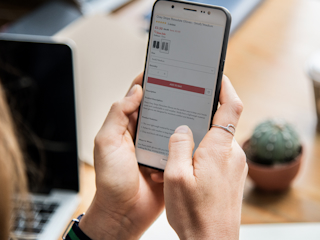The stakes are high, with customers skeptical of whether personalization is a good deal for them. In fact, 54% of people believe what they get from retailers isn’t worth the personal data they provide to loyalty schemes.
With the right approach, personalization can go from buzzword to a real driver of lasting customer relationships that can have a significant impact on your bottom line.
Tie metrics to key business outcomes
Personalization should always support the business, such as driving conversions, boosting revenue, or reducing customer churn.
"I've seen a lot of clients get really excited about personalization and say, ‘We need to do this,’ but they often don’t know why or understand the outcome for the customer," says Ewan Nicolson, Head of Data Science at Valtech.
Start by understanding what you want to achieve, then align these efforts with strategic goals. Identify key performance indicators (KPIs) and which metrics will most accurately reflect the success of personalization initiatives. "If you can't connect personalization to business outcomes, you might be doing it for personalization’s sake," says Jared Johnson, Director of Strategy & Operations at Valtech.
Here are some key metrics to help you connect your personalization initiatives to the broader business.
-
Customer retention. Repeat purchase rates and subscription renewals can show whether personalization efforts improve customer retention over time and build long-term loyalty.
-
Sales and revenue. Relevant metrics include conversion rates, average order value, and total revenue generated from personalized campaigns.
-
Customer satisfaction and engagement. Net Promoter Score (NPS), customer satisfaction surveys, and engagement metrics (e.g. click-through rates, time spent on site) show how customers perceive and interact with personalized experiences.
Broaden your horizon
As you measure personalization results, don’t limit yourself to immediate metrics like click-through rates or the most recent sales data. Look at the long-term effects on customer experience and brand loyalty.
"When you start off in the right way, by focusing on the value, measuring the impact becomes easier because you have already identified a goal,” says Heather Ryan, Lead Data Consultant at Valtech. “Then it's just about tracking the relevant metrics.”
Personalization affects deeper aspects of customer relationships, such as brand affinity and customer lifetime value (CLV), for a more comprehensive view of your campaigns. To capture this, consider metrics that indicate sustained engagement and loyalty over time:
-
Customer journey metrics: Assess the entire customer journey to identify how personalization impacts different touch points. Relevant metrics include purchase history, time to first purchase, frequency of interactions, and the length of time customers engage with your brand.
-
Churn rate: Lower churn suggests that personalized experiences resonate with customers and encourage them to stay.
-
Customer feedback and sentiment analysis: Tools that analyze customer reviews, social media mentions, and direct feedback can show how customers perceive personalization efforts.
-
Engagement depth: What happens after the initial engagement? For example, do personalized messages or recommendations lead to further action, such as cross-sells or users exploring additional products or services? This can help gauge the true impact of personalization on customer behavior.
Test, learn and iterate
Effective personalization requires continuous testing and refinement. Start small and iterate based on feedback. For example, segment your audience to test which groups respond better to specific tactics or levels of personalization.
Over time, you’ll see how personalization drives behavioral changes, such as shifts in purchase patterns or increased engagement with tailored recommendations. For example, a company that wanted to move toward ecommerce could start by segmenting its customer base to provide customized experiences, depending on whether they were already loyal buyers of the brand or just getting familiar with it.
Get specific with your testing. Deploy personalization rules to infer the positive, neutral or negative impact of your strategies on standard engagement and personalization KPIs. Start by measuring changes in metrics such as bounce rates, time on page and pages per visit after implementing personalization efforts.
Gather qualitative and quantitative data. Collect customer feedback through surveys or direct interactions, so you can fully understand your audience’s perception of personalized shopping experiences. Pairing metrics with customer stories will generate comprehensive insights into your personalization strategy and your overall marketing approach.










